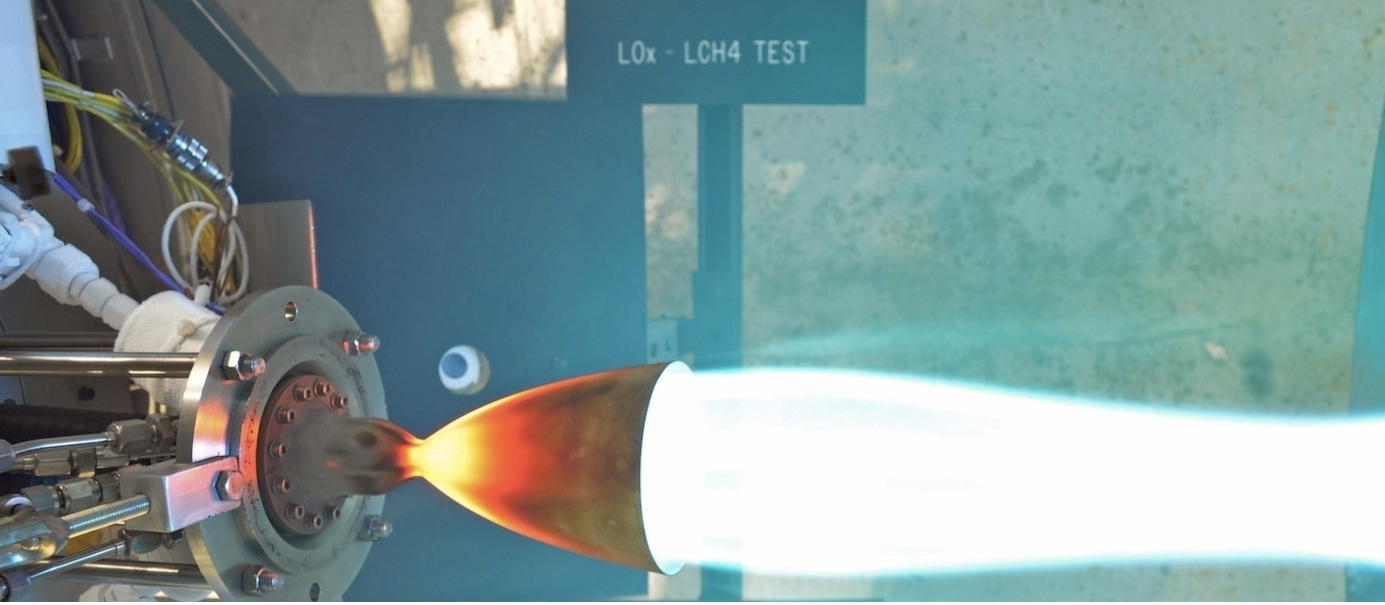
The drive for performance in propulsion and thermal protection systems (TPS) places the development of materials adapted for high temperatures at the forefront of NASA’s efforts in materials science. We have developed new alloys and ablators to withstand high heat in aerospace and propulsion, industrial machinery, marine turbine engines, oil refining, and power generation using new methods and processes in composition. The following are a few examples of our innovative high-heat materials and coatings technology ready to be licensed.
Cheaper, Additively Manufactured Alloy Withstands 1100 °C with 10x Improvement in Creep
NASA’s new Oxide Dispersion Strengthened Medium Entropy Alloy (ODS-MEA) was developed using additive manufacturing (AM) to enhance mechanical properties at extreme temperatures. The alloy can be fabricated into complex geometries and is resistant to stress cracking and dendritic segregation. The alloy is not susceptible to harmful phase changes when exposed to extreme environments, and the oxide-based process has been shown to fabricate components with 10x improvement in creep rupture life at 1100 °C and a 30% increase in strength relative to current 3D-printable metal parts. The process also eliminates numerous expensive and time-consuming steps for producing ODS alloys and requires limited post-processing. Due to these improvements, this alloy sees applications in high-temperature components for propulsion or space launch systems, jet/marine/electricity-generating turbine engines, chemical/waste processing systems, oil refining processes, solar thermal power plants, and nuclear reactor systems.
Woven Fiber Ablative Excels in Structural and Thermal Performance for Lunar Return Missions
imensional Multifunctional Ablative Thermal Protection System (3DMAT) uses an innovative woven technology initially tailored to the Orion Multi-Purpose Crew Vehicle (MPCV) compression pad. The compression pads serve as an ablative TPS withstanding the high heat of Earth re-entry, and carry the structural loads generated during launch, space operations, and pyroshock separation of the crew module and service module. As opposed to the initial compression pad for Orion, the 3DMAT material is a woven fiber preform fully densified with cyanate ester resin. This produces a large composite with significant structural capabilities and the ability to withstand high heat on its outer surface while keeping the inner surface cool. The 3DMAT boasts significantly enhanced composite z-direction (inter-layer) strength relative to a 2D laminate material, a more significant part-cross section than any previous continuously woven material, and robust aerothermal performance (tested up to 700W/cm2). It has potential in material handling, aerospace systems, TPS, and manufacturing applications.
Ni-Based Superalloy Resistant to Creep at Temperatures Above 700°C
NASA’s new nickel-based superalloy uses a powder metallurgy (PM) composition to inhibit deleterious deformation and significantly improve the creep life of turbine disks while increasing the operating temperature limit. This improves the high-temperature properties of Ni-based superalloys because higher temperature operation allows increased engine efficiency and reduced CO2 emissions for jet engines and turbines while also enabling a longer lifetime for turbine blades. The Ni-based superalloy offers a new phase-transformation strengthening mechanism, which allows it to resist high-temperature creep deformation and inhibits the harmful deformation mode of nanotwinning at temperatures above 700°C. This superalloy has applications in high-stress and high-temperature environments such as propulsion, space launch systems, jet/marine/steam/gas turbine engines, oil refining processes, chemical/waste processing systems, solar thermal power plants, and nuclear reactor systems.
Low-Density Ablator with High Char Stability and Over 400°C Decomposition Temperature
A new polymer system of cyanite ester and phthalonitrile resins was used to create this carbon-reinforced ablator with improved structural performance and high-temperature capability. Cyanate ester resin systems can be cured in a carbon matrix and generate a high surface area structure within the carbon fibers, which helps reduce the thermal conductivity of the material. NASA has successfully processed the cyanate ester and phthalonitrile resins with a morphology similar to the Phenolic Impregnated Carbon Ablator (PICA) but with increased char yield, char stability, thermal stability, and glass transition temperature. This ablator can be utilized in various applications, including space exploration, TPS, and a variety of engineering disciplines (systems, materials, mechanical).
Are you interested in licensing the tech mentioned above? Follow the links to apply through our website. You can also browse our entire technology portfolio here.



